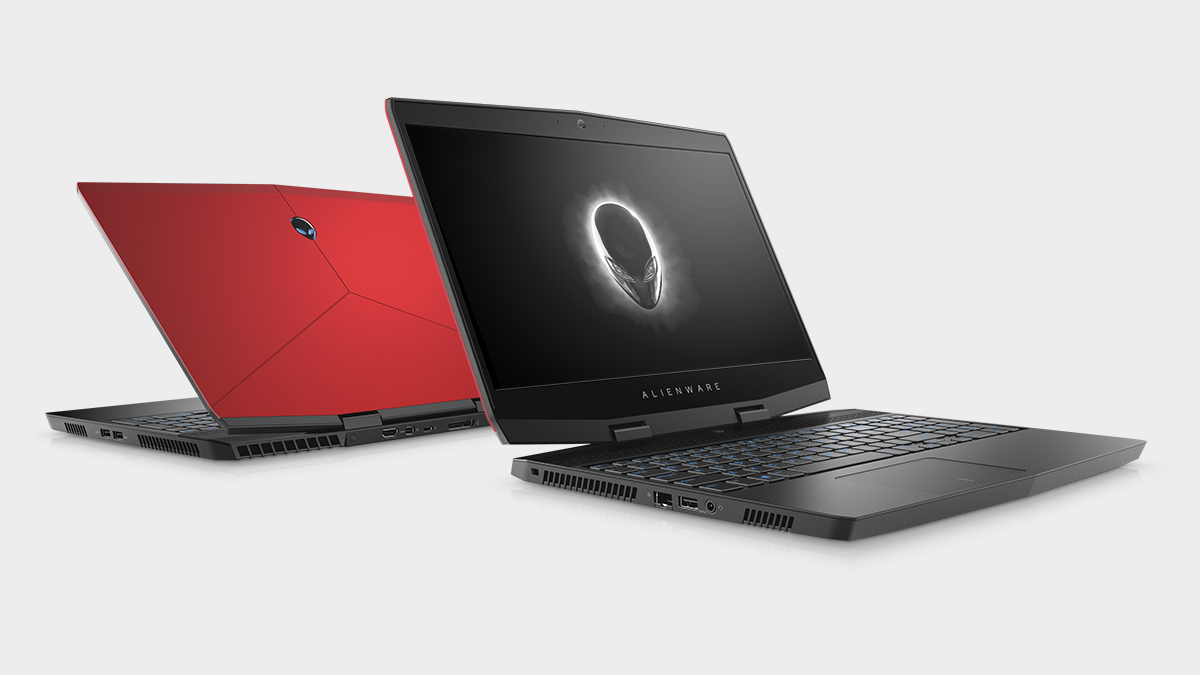Our Verdict
Alienware's foray into the thin and light gaming laptop sphere is an aggressively priced, if underwhelming, take on Nvidia's Max-Q design push.
For
- Competitive specs for the price
- Lasting battery life
- Exemplary keyboard
Against
- Thick top and bottom bezels
- Charger sticks out of the port
- Uninspired plastic touchpad
- Fails to maintain steady 60 fps in some games
PC Gamer's got your back
It's been a year and a half since Nvidia announced Max-Q, a design effort intended to make gaming laptops thinner and lighter while retaining much of their performance. In the time that's elapsed since, it's clear that the initiative has paid off for the Green Team. We've seen a tremendous surge in laptops boasting narrow profiles and low poundage, combined with the powerful graphics chips needed to play the latest triple-A blockbuster games.
Price: $2,179
Processor: Intel Core i7-8750H
Graphics: Nvidia GeForce GTX 1070 Max-Q 8GB
Memory: 16GB DDR4-2,666MHz
Resolution: 15.6" IPS with 144Hz refresh rate (1920x1080)
Storage: 512GB SSD
Battery: 90Wh
Connectivity: HDMI 2.0, Mini-DisplayPort 1.3, Ethernet, 1 x Thunderbolt 3 USB 3.1 port, 2 x USB 3.1 Type-A ports, 3.5mm audio jack, Alienware Graphics Amplifier port
OS: Windows 10 Home 64-bit
Dimensions: 0.83 x 14.3 x 10.8 inches
Weight: 4.78 lbs
Warranty: One year
The latest addition to the ensemble is the Alienware m15, a laptop that further emboldens my existing stance on Max-Q gaming laptops. As capable as it is, it's no substitute for an equally priced desktop. You could buy the CyberPower Gamer Extreme or even Alienware's own Aurora gaming PC sporting faster, full-size desktop components for hundreds of dollars less than this machine. Hell, you could build your own for cheaper than that. But then you wouldn't be buying a laptop.
Much of the allure of the $2,179 Alienware m15 Dell sent us stems from the fact that it is portable. Within the confines of its 0.83 x 14.3 x 10.8-inch chassis are a 15.6-inch screen, a full-size keyboard with a number pad, a touchpad that works and two speakers. Its skeleton comprises an 8th-generation Intel Core i7 H-series processor, 16GB of RAM and a single 512GB M.2 SSD. A 90Wh lithium-ion battery occupies the space where a secondary drive would have been installed had one been included.
That said, you can buy the Alienware m15 for as low as $1,379 if you don't mind downgrading to a GTX 1060, 8GB of RAM and a 1TB hybrid drive with 8GB of SSHD storage.
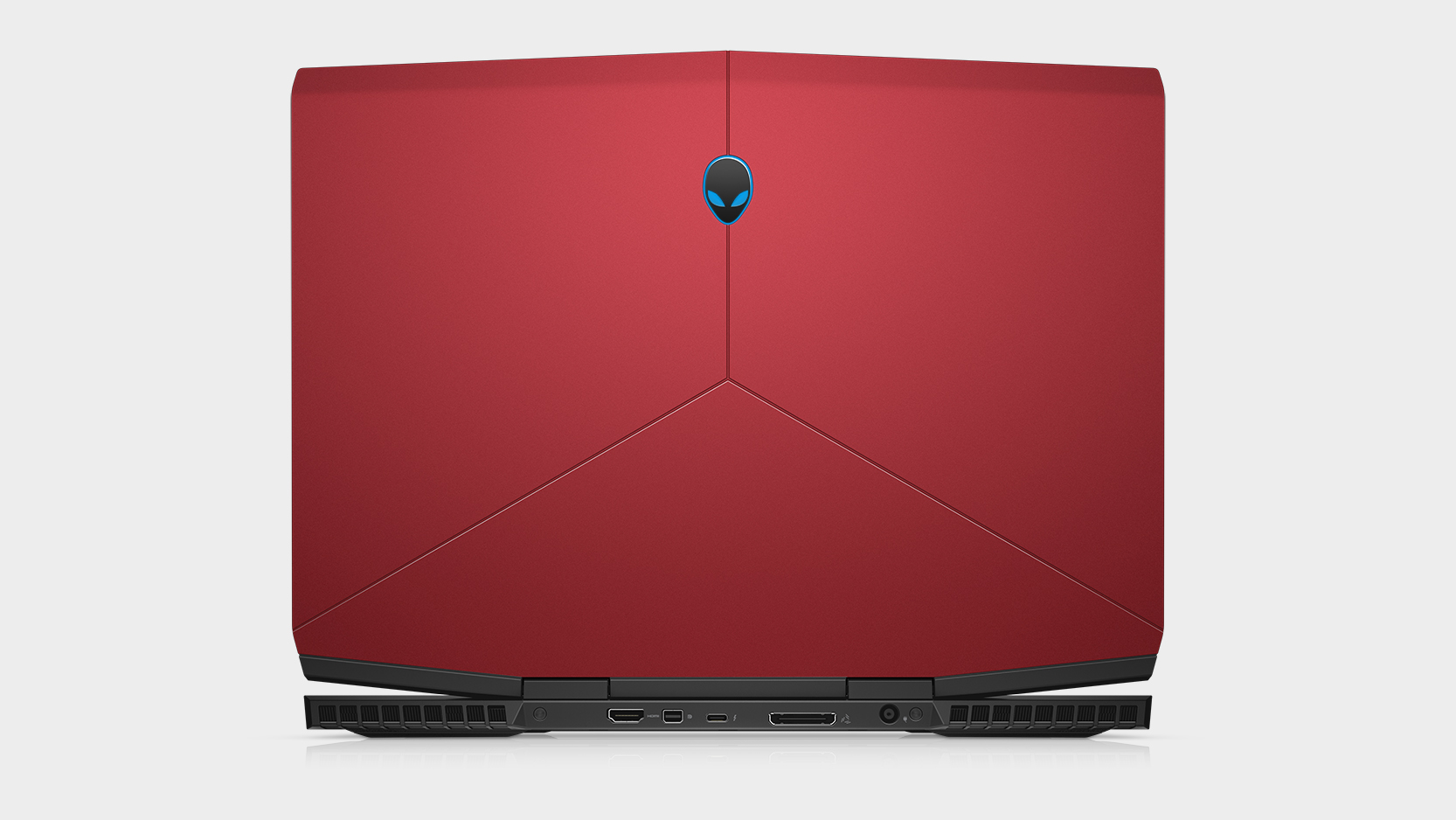
Despite its red and black gamer's aesthetic, the Alienware m15 radiates elegance. Pairing naturally with the company's signature tri-sectional engraving, only the lid has been glazed in a "Nebula Red" coating—a crimson hue exclusive to the 144Hz panel option. I can't help but wish Alienware would abandon the hackneyed red and black color scheme, forever, in favor of literally anything else. Those who opt for the 60Hz display can enjoy a satin finish called "Epic Silver," which I prefer for its more adult look.
The rest of the frame is a subdued charcoal color that alternates between glossy and matte. I like the soft touch of the matte regions, susceptible to fingerprints as they might be. But the reflective plastic surrounding the screen and speaker grille cheapens the laptop's overall appearance, drawing unwanted attention to its beefy top and bottom bezels. Seriously, an inch-long bezel is unacceptable on a laptop that is, according to Dell, "built for narrow escapes."
At its thinnest point, the Alienware m15 measures just 0.71 inches. It's barely thicker than my personal laptop, the 0.69-inch-thick MSI GS65 Stealth Thin. Its archnemesis, the Razer Blade 15, is ever-so-slightly thinner than both, at 0.68 inches. Of the three, the Alienware m15 weighs the most, too, at 4.78 pounds. Meanwhile, the GS65 Stealth Thin and the Razer Blade weigh 4.10 pounds and 4.48 pounds, respectively.
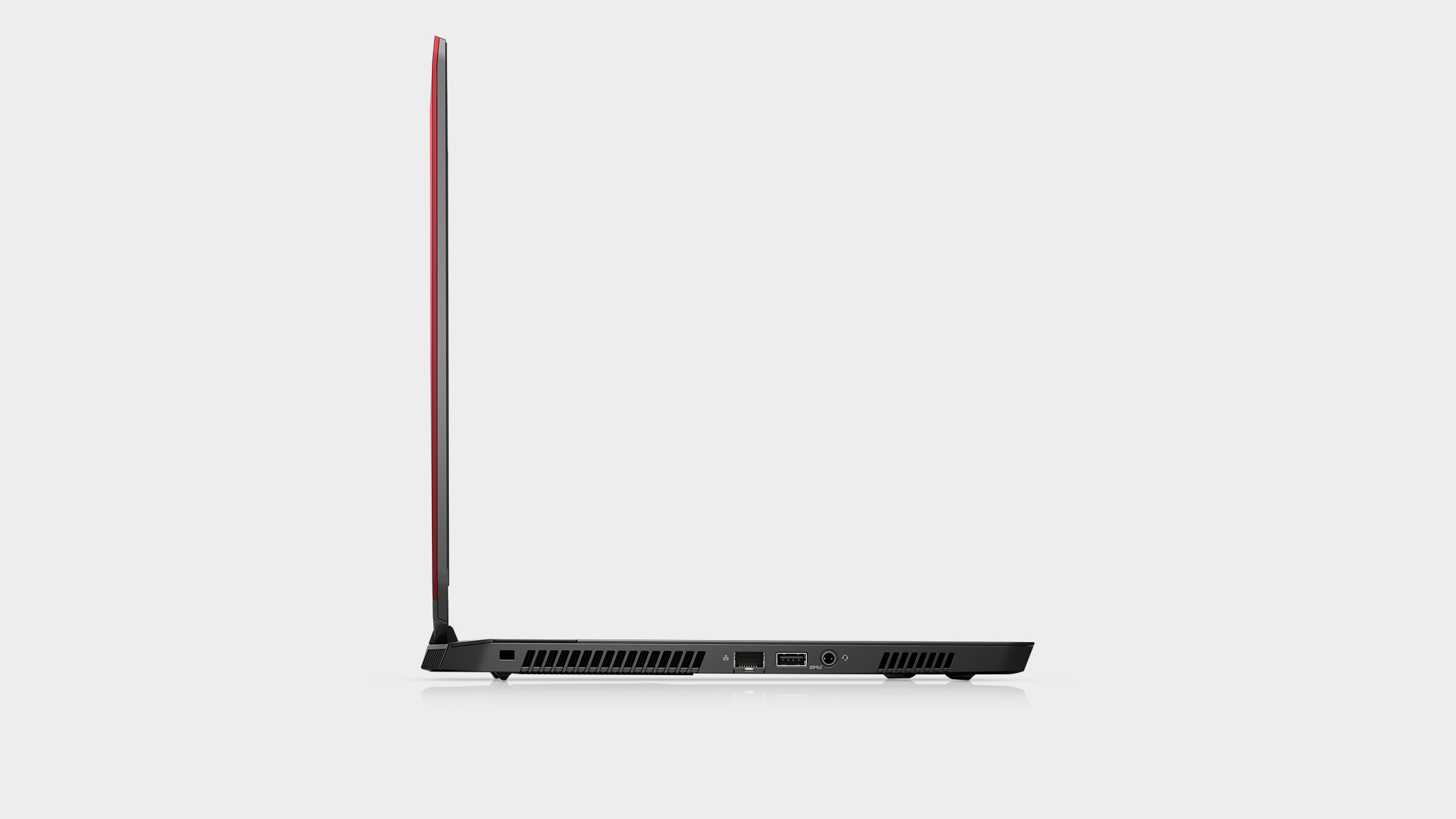
As is the norm for gaming laptops, a chunky power supply adds to the weight when you're lugging it around. Tempted as I am to spend my time dunking on yet another oversized laptop charger, more frustrating is that the accompanying DC connector doesn't fit all the way inside the charging port. Although it has no problem charging, which is all that should matter, I can't help but feel betrayed every time I go to plug it in and a portion of the metal connector is protruding from the rear.
Featuring 1.4mm of travel, the Alienware m15 is home to a punchy new keyboard. Though not mechanical, it does feel a lot bouncier and more tactile than the keyboards wielded by its closest competitors. The best I can say for the plastic touchpad is that while it works well enough for basic tasks, it is too small and imprecise for gaming, especially when compared to the spacious glass touchpad on the Razer Blade. If you do buy this laptop, I suggest shelling out a few extra bucks for a suitable gaming mouse as well.
Dell claims that you can expect to play all of your favorite games with "uncompromised graphics" on the Alienware m15, and considering the lofty price tag, I'd damn well hope so. The reality, however, is a lot less black and white. Based on my own synthetic benchmarking, it seems that Nvidia's last-generation Pascal architecture, from which the GTX 1070 was molded, is starting to show its age. What was once the de facto graphics card for 1440p gaming is now struggling to meet the 60fps gold standard in some newer games.
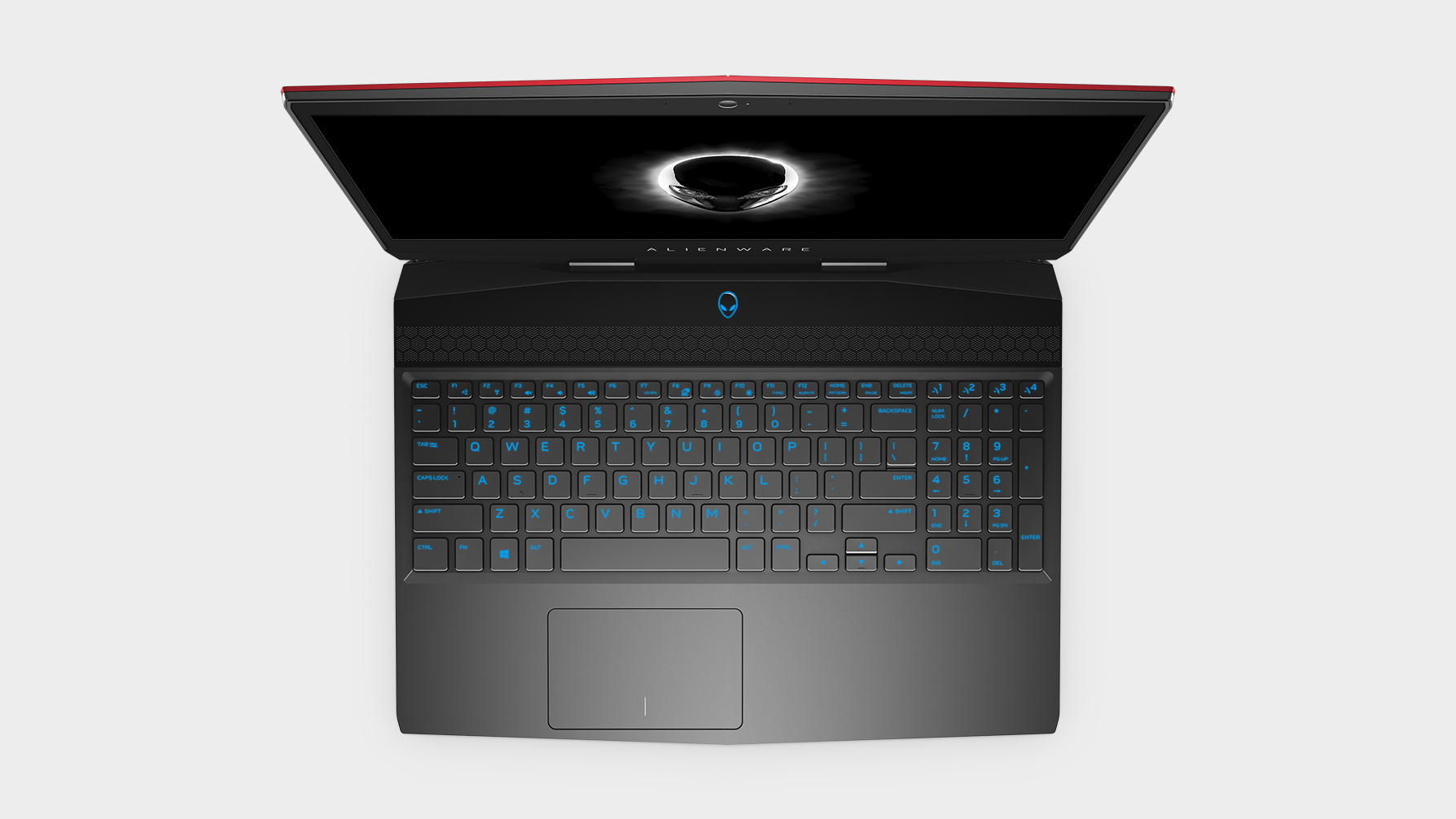
In Shadow of the Tomb Raider, for example, the Alienware m15 averaged 58 fps at the highest presets. At the same time, Ghost Recon: Wildlands' built-in benchmark netted a numerical mean of 49.3 fps. When we tested the Razer Blade 15 earlier this year, Shadow of the Tomb Raider had not yet been released. Wildlands, on the other hand, produced a score of 44 fps on Razer's Max-Q notebook. Since the Alienware m15 and the Razer Blade 15 both use the same processor and GPU, it comes as no surprise that they would perform similarly in real-world testing.
Playground Games' Forza Horizon 4 proved less demanding for the Alienware m15. In an extensive play test, I experienced frame rates between 80 and 95 as I cruised around its picturesque representation of the UK. Hearing the fans start to whir louder, I put my headphones on and the problem disappeared behind the sound of my car drifting off-road and into a desolate field. Monitoring the temperature, I found that the CPU warmed from 117 degrees when idle to a blistering range of 194-212 degrees Fahrenheit under the stress of glorious open-world racing. You won't want to keep it on your lap during intense gameplay sessions.
In the productivity world, Ultrabooks have set the precedent for thin and light laptops to also bear lengthy battery lives, a trend which has yet to make its way over to the gaming sector. Earlier this year, we praised the Razer Blade 15 for its long battery life, made possible by an 80Wh internal pack. Contrarily, our sister site TechRadar criticized it, suggesting the Blade lasted a mere 2 hours and 46 minutes in the publication's movie test, wherein a film is played on loop in VLC Player until the laptop's fatal demise. To test the battery life on the Alienware m15, I watched a Twitch stream for 7 hours and 11 minutes before the system shut down.
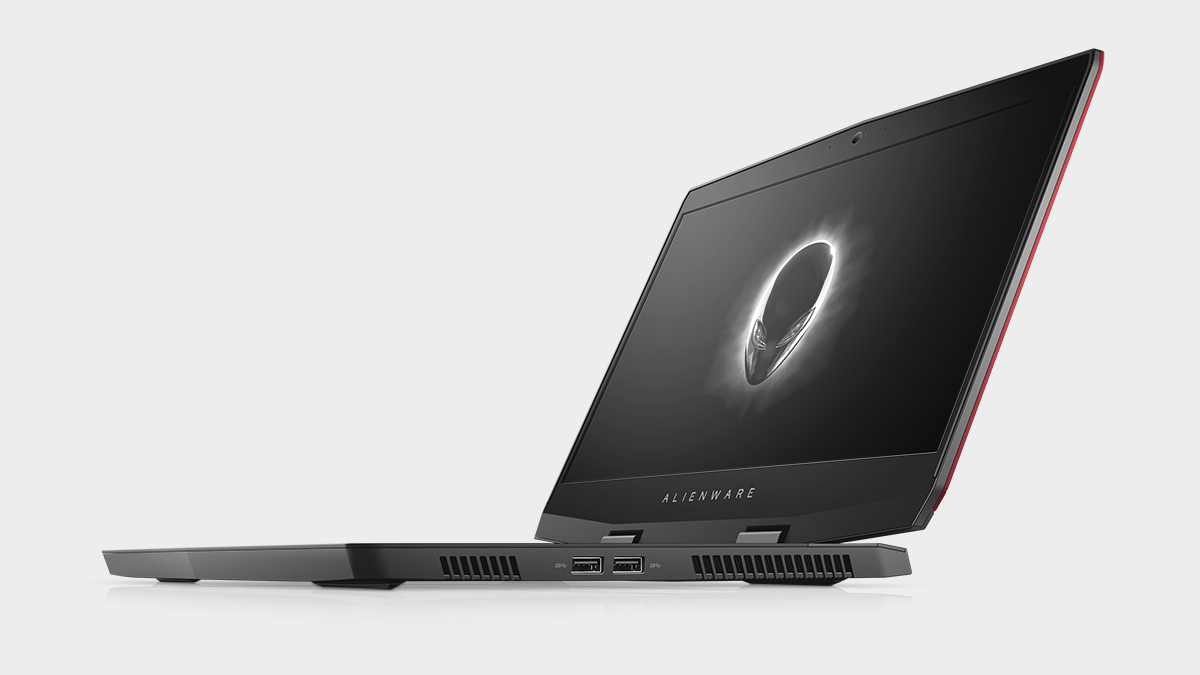
I'm torn on whether I should recommend the Alienware m15. On one hand, it's not quite as thin or as light as its main rivals. Its design, while more contemporary than what we've seen from Alienware in the past, still has a few remaining quirks. And even though its specs are in line with the latest offerings from Razer and MSI, the Max-Q rendition of Nvidia's GeForce GTX 1070 graphics chip is beginning to show its age. As certain triple-A games begin to prove themselves more demanding, 60 fps at 1080p has proved itself an ambitious target.
On the other hand, the Alienware m15 I reviewed here delivers performance similar to the $2,599 Razer Blade 15 for hundreds of dollars less, making it the better value in terms of sheer horsepower alone. It's not for everyone, but it does paint a clearer picture of what the future holds for Dell's gaming-first notebook division.
Alienware's foray into the thin and light gaming laptop sphere is an aggressively priced, if underwhelming, take on Nvidia's Max-Q design push.
